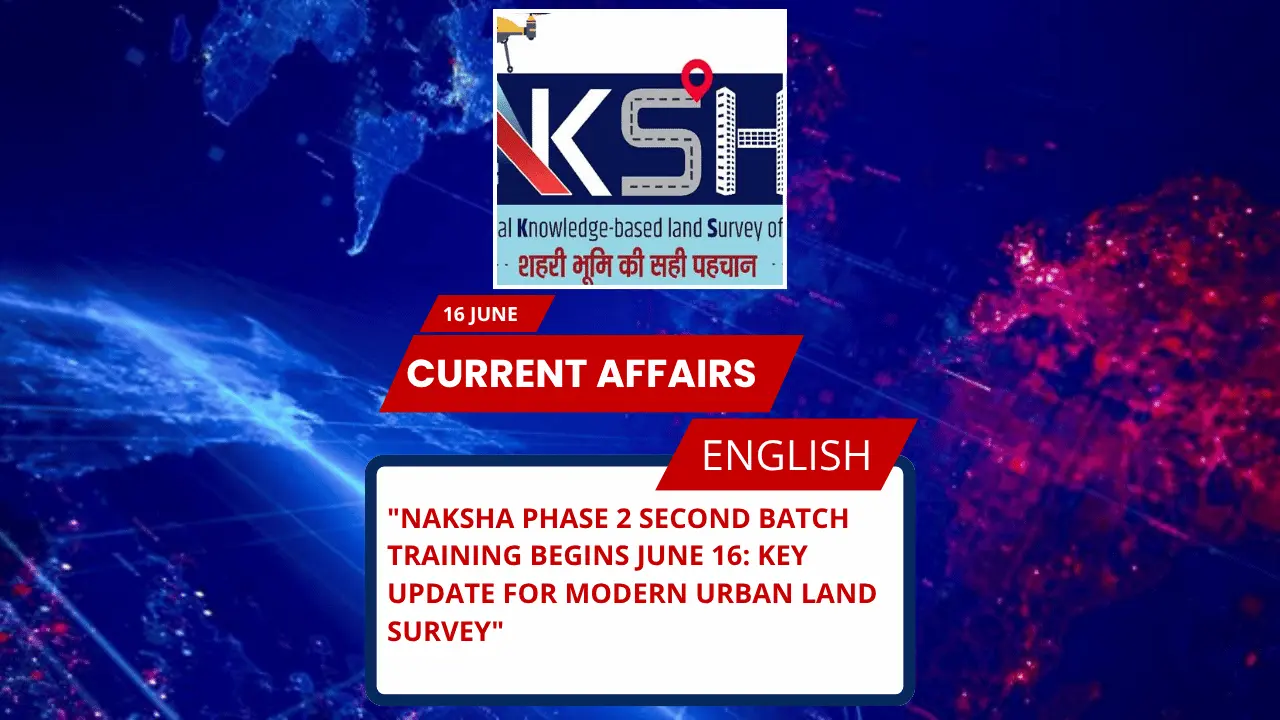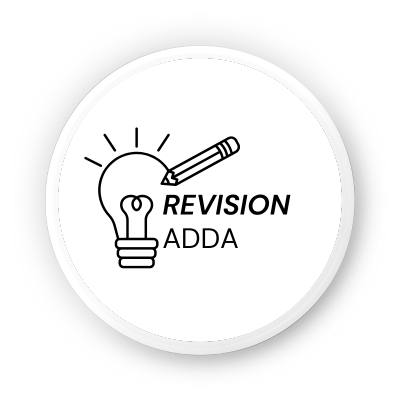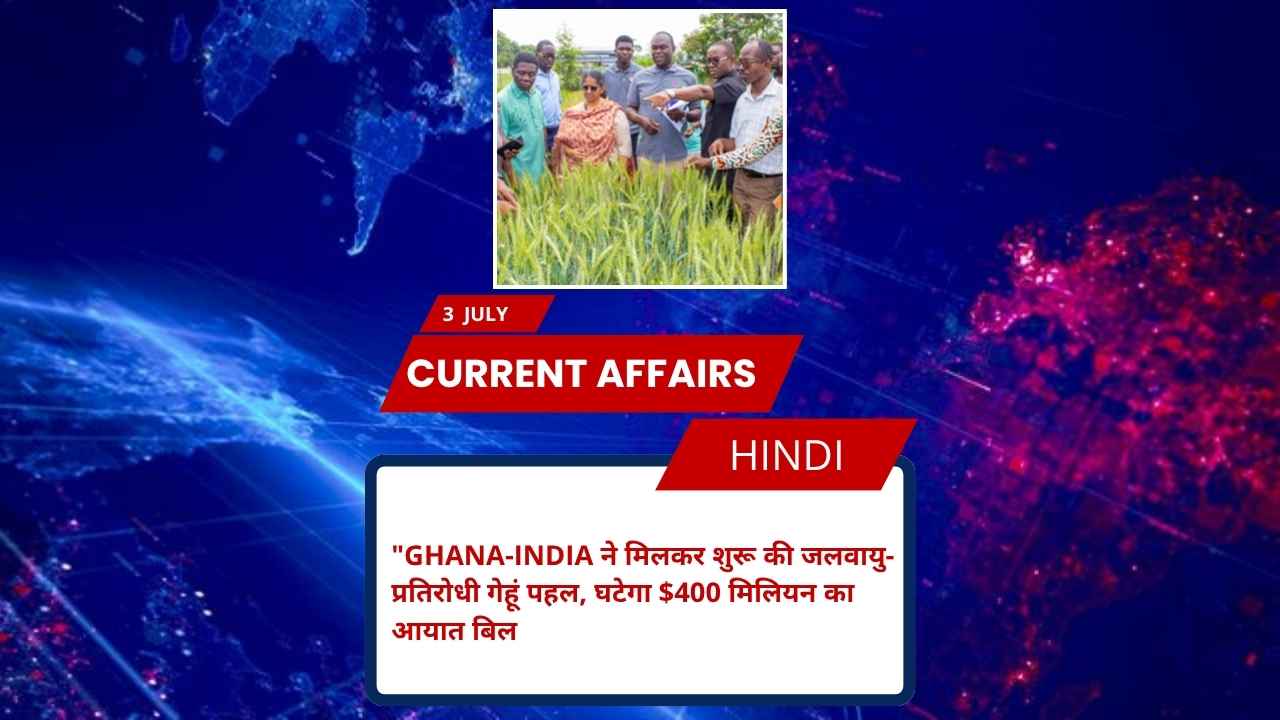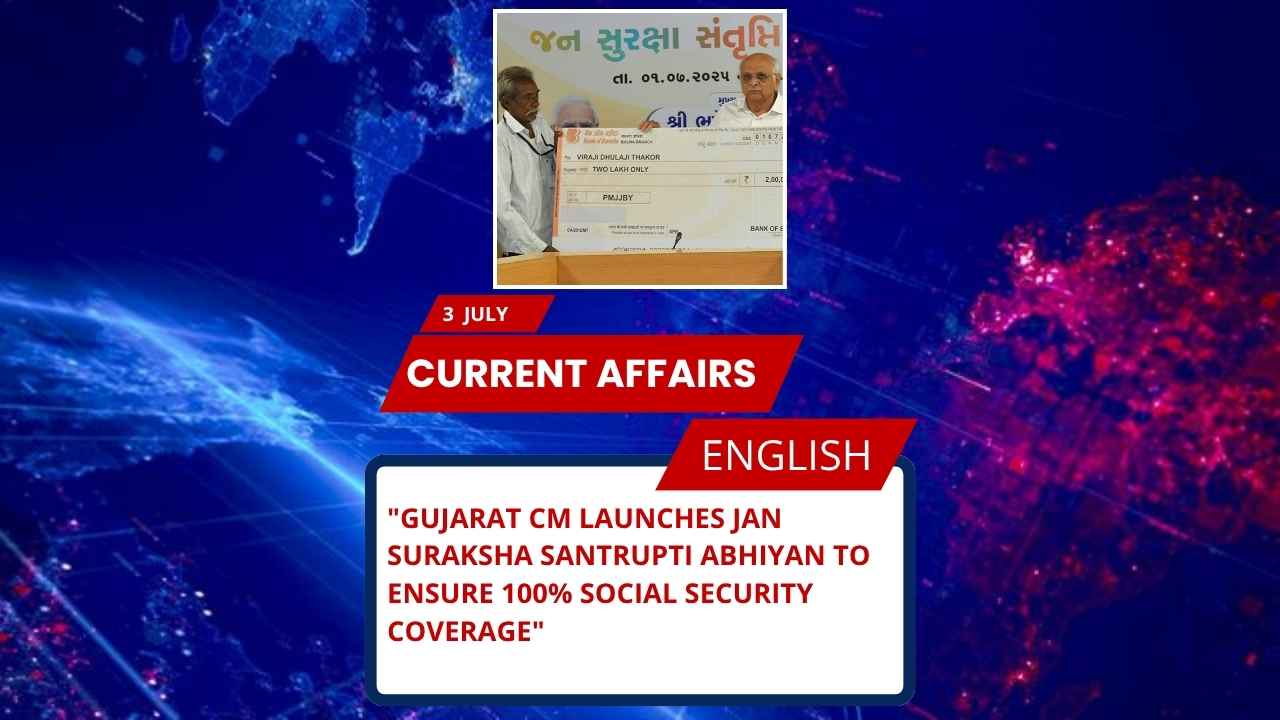
Key Points for SSC, UPSC, and Other Govt Exams
- Second batch of Phase 2 NAKSHA Capacity Building Programme begins on June 16, 2025
- Organised by Department of Land Resources (DoLR) under the Ministry of Rural Development
- Aims to train officers in modern geospatial land survey techniques
- Training at 4 National Centres of Excellence
- Focus on GNSS, ETS, Web-GIS applications, land parcel mapping
- 128 officers from 74 Urban Local Bodies (ULBs) to participate
- NAKSHA launched as pilot in 157 ULBs across 27 States and 3 UTs
- Collaboration with Survey of India, NICSI, MPSeDC, and 5 Centres of Excellence
Overview of NAKSHA Phase 2 Second Batch Training
The National Geospatial Knowledge-Based Land Survey of Urban Habitations (NAKSHA) is a modern initiative aimed at digitising and modernising urban land records. The second batch of Phase 2 capacity building training will commence on June 16, 2025, under the aegis of the Department of Land Resources (DoLR), Ministry of Rural Development. This week-long programme targets officers from Urban Local Bodies (ULBs) and district administrations.
Training Objectives and Coverage
- Skill Enhancement: Officers will be trained in Global Navigation Satellite System (GNSS), Electronic Total Station (ETS) surveying, Web-GIS applications, and urban land parcel mapping.
- Legal Frameworks: The curriculum includes sessions on urban land record legal and administrative frameworks.
- Centres of Training:
- YASHADA, Pune
- ATI, Mysuru
- MGSIPA, Chandigarh
- North-East Centre of Excellence, Guwahati
Previous Achievements of NAKSHA
- Phase 1 and first batch of Phase 2 have successfully trained 300+ Master Trainers and ULB officers
- The pilot covered 157 ULBs in 27 States and 3 Union Territories
Important Facts About Related Organisations
Department of Land Resources (DoLR)
- Parent Ministry: Ministry of Rural Development, Government of India
- Main Role: Policy formulation and implementation related to land resources, land records modernisation
Survey of India
- Established: 1767
- Parent Department: Department of Science & Technology, Government of India
- Headquarters: Dehradun, Uttarakhand
- Function: National mapping and surveying authority
YASHADA (Yashwantrao Chavan Academy of Development Administration)
- Location: Pune, Maharashtra
- Role: Premier training institute for government officers
ATI (Administrative Training Institute)
- Location: Mysuru, Karnataka
- Function: State-level training institute for Karnataka government officers
MGSIPA (Mahatma Gandhi State Institute of Public Administration)
- Location: Chandigarh
- Purpose: Training for Punjab’s administrative officers
Northeast Region Centre of Excellence
- Location: Guwahati, Assam
- Role: Capacity building for the Northeastern states
Assam (State mentioned in training locations)
- Capital: Dispur
- CM: Himanta Biswa Sarma (as of 2025)
- Governor: Gulab Chand Kataria
- Major Rivers: Brahmaputra, Barak
- Important National Parks: Kaziranga, Manas, Nameri
Maharashtra (State of YASHADA)
- Capital: Mumbai
- CM: Eknath Shinde (as of 2025)
- Major Rivers: Godavari, Krishna
- Important National Parks: Tadoba, Sanjay Gandhi National Park
Karnataka (State of ATI)
- Capital: Bengaluru
- CM: Siddaramaiah (as of 2025)
- Major Rivers: Kaveri, Tungabhadra
- Important National Parks: Bandipur, Nagarhole
Punjab (State of MGSIPA)
- Capital: Chandigarh
- CM: Bhagwant Mann (as of 2025)
- Major Rivers: Sutlej, Beas
- Important National Parks: Harike, Abohar
MCQs on NAKSHA Phase 2 Training
Q1. The NAKSHA Phase 2 second batch capacity building programme is launched by:
A) Ministry of Housing and Urban Affairs
B) Ministry of Rural Development
C) Ministry of Earth Sciences
D) Ministry of Environment
Answer: B) Ministry of Rural Development
Q2. Which technology is being emphasised in NAKSHA Phase 2 training?
A) Blockchain
B) GNSS and ETS
C) Artificial Intelligence
D) Drone Surveillance
Answer: B) GNSS and ETS
Q3. Where is YASHADA, one of the training centres under NAKSHA Phase 2, located?
A) Guwahati
B) Pune
C) Mysuru
D) Chandigarh
Answer: B) Pune
Q4. The Survey of India, involved in NAKSHA, functions under which ministry?
A) Ministry of Science & Technology
B) Ministry of Agriculture
C) Ministry of Defence
D) Ministry of Rural Development
Answer: A) Ministry of Science & Technology
UPSC-Style FAQs (Model Answers in Mains Format)
Q1. Discuss the significance of NAKSHA in the modernisation of urban land records in India.
Answer:
The National Geospatial Knowledge-Based Land Survey of Urban Habitations (NAKSHA) represents a paradigm shift in India’s approach to urban land records. By integrating advanced technologies like GNSS, ETS, and Web-GIS, NAKSHA aims to bring accuracy, transparency, and efficiency in land parcel mapping. This modernisation facilitates better urban planning, dispute resolution, and ease of governance. Moreover, the capacity building component ensures that ULB and district officers are equipped with necessary technical skills, thus strengthening institutional capacity at grassroots levels.
Q2. Explain the role of DoLR and its partners in implementing NAKSHA.
Answer:
The Department of Land Resources (DoLR) under the Ministry of Rural Development acts as the nodal agency for NAKSHA. It provides policy direction, coordination, and oversight. The Survey of India offers technical expertise in surveying and mapping, while organisations like NICSI, MPSeDC, and various Centres of Excellence contribute through technology, infrastructure, and training support. This multi-stakeholder collaboration ensures comprehensive and standardised land record modernisation across India.
Q3. What challenges might arise in implementing programmes like NAKSHA, and how can they be addressed?
Answer:
Key challenges include capacity gaps at the local level, technology adoption barriers, and coordination issues among stakeholders. To address these, it is essential to strengthen capacity building initiatives like the current Phase 2 training, promote user-friendly technological solutions, and establish robust inter-agency coordination frameworks. Ensuring community participation and legal clarity in urban land rights can further enhance the programme’s success.







